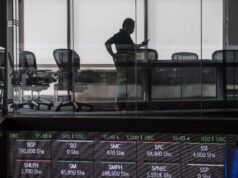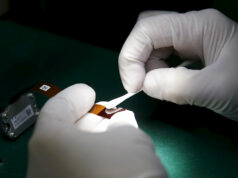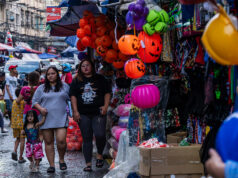POGO service providers, jewelry dealers face ‘medium risk’ exposure to money laundering

JEWELRY DEALERS, service providers of Philippine Offshore Gaming Operators (POGOs), as well as lawyers and accountants have a “medium risk” exposure to money laundering and terrorist financing, the Anti-Money Laundering Council (AMLC) said.
“Financial criminals found ways to divert and continue laundering their illicit funds through the use nonfinancial businesses and professions,” the AMLC said in its 2021 risk review of designated nonfinancial businesses and professions (DNFBPs).
“The wide array of legitimate services is very attractive to financial criminals. This makes the sector vulnerable to money laundering and terrorism financing,” it added.
The AMLC noted sellers of gold and jewelry are vulnerable as these high-value items can be used for money laundering activities “since illegal cash can easily be converted into transferable assets.”
“Among all predicate crimes that are identified in the country, funds coming from fraud, tax crimes and corruption are identified by the industry players as “high risk” and that may be coursed through the DNFBP sector. Funds from smuggling are also identified particularly for the jewelry sector,” it said.
AMLC also noted criminals are using accounting and legal professionals to find ways to hide the illegal source of “dirty money.”
“The threat that these nonfinancial businesses and professions to be misused is high in a jurisdiction that lacks sufficient anti-money laundering laws and regulations,” it said.
The data was gathered from registered nonfinancial covered persons and entities as of May 25 2021.
Around 4,000 covered transaction reports with a value of P20.61 billion were filed by accountants, company service providers, and jewelry dealers from 2019 to 2021.
The bulk or P19.77 billion were filed by company service providers that serve as agents or provide a registered office or partnership with a legal entity.
From 2019 to 2021, only the jewelry sector filed suspicious transaction reports to the AMLC. In 2021, 18 suspicious transaction reports were reported.
“It may be noted that there is still an evident lack of understanding of the sector with regard to filing of covered and suspicious transactions. Nevertheless, with the available data and the responses provided, the threat assessment is still set at the medium level,” AMLC said.
Among the covered sectors, the service providers of POGOs indicated high level of vulnerability, as they did not identify money laundering and terrorist financing risks.
The AMLC noted risk assessment it made on POGOs had stated that “service providers of offshore gaming operators are prone to abuse and exploitation for money laundering and other crimes.”
“The results of the vulnerability assessment on the sector clearly shows that the weak oversight coupled with the low understanding of AML/CTF (anti-money laundering/counter-terrorist financing) obligations and lack of established AML/CTF policies and procedures greatly expose the sector to abuse and misuse,” it said.
The AMLC also flagged the low registration of accounting and auditing professionals, as well as lawyers with the council.
“The low rate of registration with the AMLC still increases its risk exposure since compliance with AML regulations may not be assessed for entities who are not registered or under the supervision of the AMLC. To maintain a high level of professional responsibility and integrity, AML/CTF safeguards must be implemented by the sector to avoid misuse,” it added.
Also, only 7% of jewelry dealers are registered with the AMLC, since most are family-run businesses.
“The size of the sector and its accessibility across the country makes it vulnerable especially for those not registered with the AMLC since AML/CTF awareness is lacking,” it added.
The AMLC said there is a need to boost registration of covered individuals in these sectors, as well as increase awareness campaigns.
The Philippines has been included among jurisdictions under increased monitoring by the Financial Action Task Force (FATF) in June 2021. It needs to prove it has implemented tighter measures against dirty money and terrorism financing to exit the FATF’s “gray list.”
The government is hoping to be removed from the gray list by January 2023. — L.W.T.Noble



